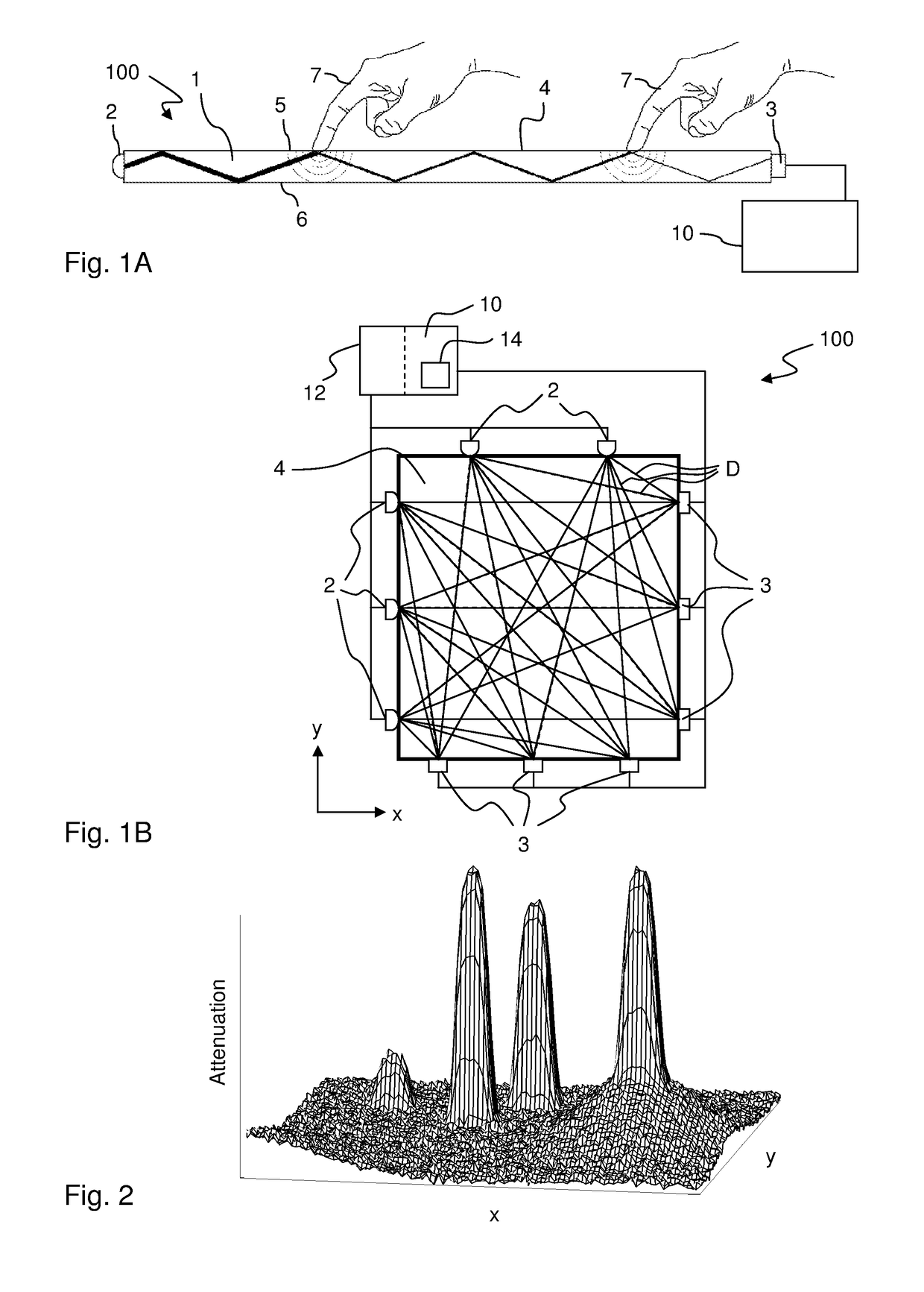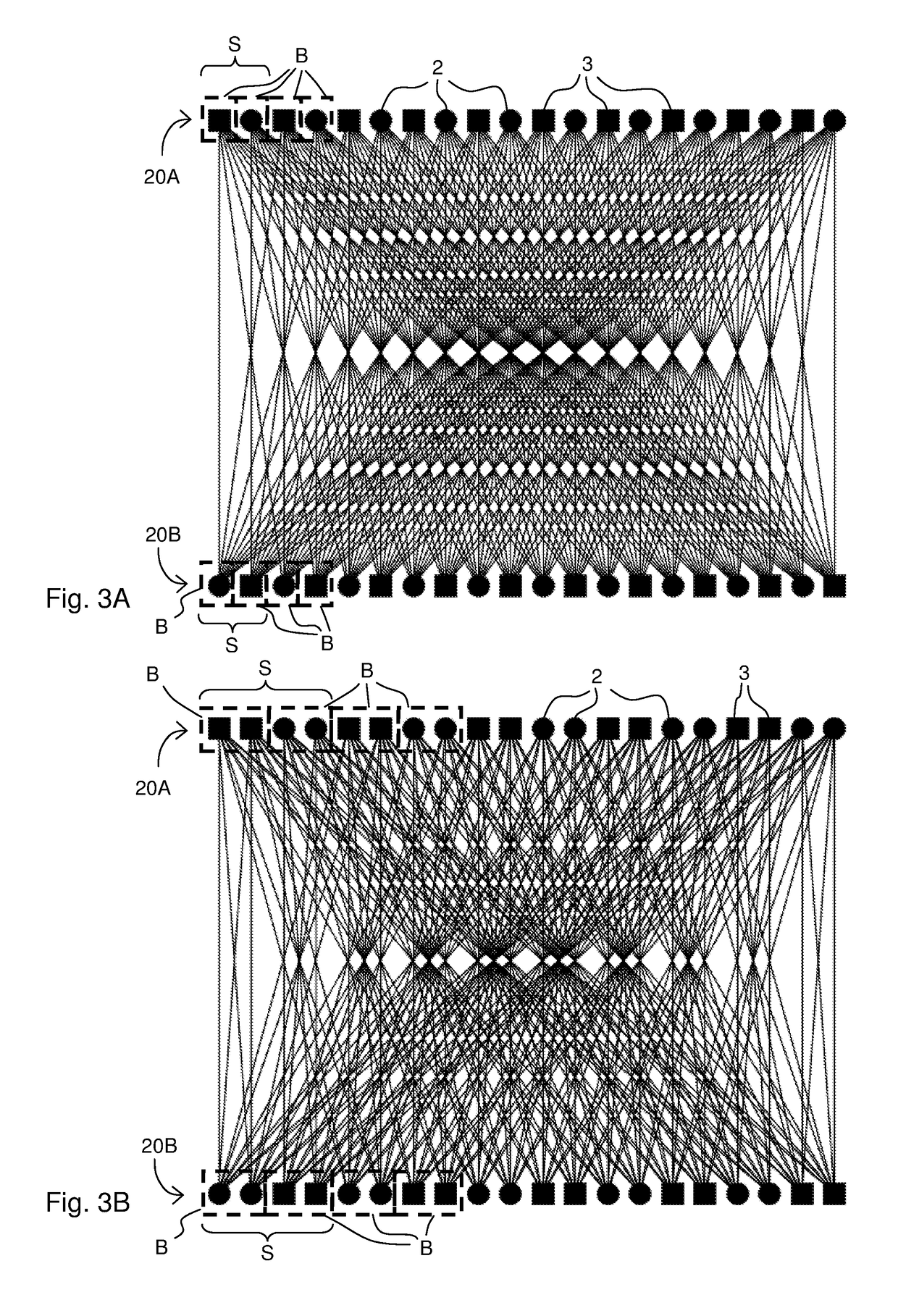Touch-sensitive apparatus with improved spatial resolution
a technology of spatial resolution and touch-sensitive apparatus, which is applied in the field of touch-sensitive apparatus, can solve the problems of changing the light received by one or more detectors, and achieve the effects of increasing gaps, avoiding convergence of propagation paths, and increasing uniformity
- Summary
- Abstract
- Description
- Claims
- Application Information
AI Technical Summary
Benefits of technology
Problems solved by technology
Method used
Image
Examples
Embodiment Construction
[0034]In the following, examples of the present invention will be given in relation to a touch-sensitive apparatus designed to operate by light transmission. Throughout the description, the same reference numerals are used to identify corresponding elements.
[0035]FIGS. 1A-1B illustrate an example embodiment of a touch-sensitive apparatus 100 that is based on the concept of FUR (Frustrated Total Internal Reflection). The apparatus 100 operates by transmitting light inside a panel 1, from light emitters 2 to light sensors or detectors 3, so as to illuminate a touch surface 4 from within the panel 1. The panel 1 is made of solid material in one or more layers and may have any shape. The panel 1 defines an internal radiation propagation channel, in which light propagates by internal reflections. In the example of FIG. 1, the propagation channel is defined between the boundary surfaces 5, 6 of the panel 1, where the top surface 5 allows the propagating light to interact with touching obj...
PUM
 Login to View More
Login to View More Abstract
Description
Claims
Application Information
 Login to View More
Login to View More - R&D
- Intellectual Property
- Life Sciences
- Materials
- Tech Scout
- Unparalleled Data Quality
- Higher Quality Content
- 60% Fewer Hallucinations
Browse by: Latest US Patents, China's latest patents, Technical Efficacy Thesaurus, Application Domain, Technology Topic, Popular Technical Reports.
© 2025 PatSnap. All rights reserved.Legal|Privacy policy|Modern Slavery Act Transparency Statement|Sitemap|About US| Contact US: help@patsnap.com



